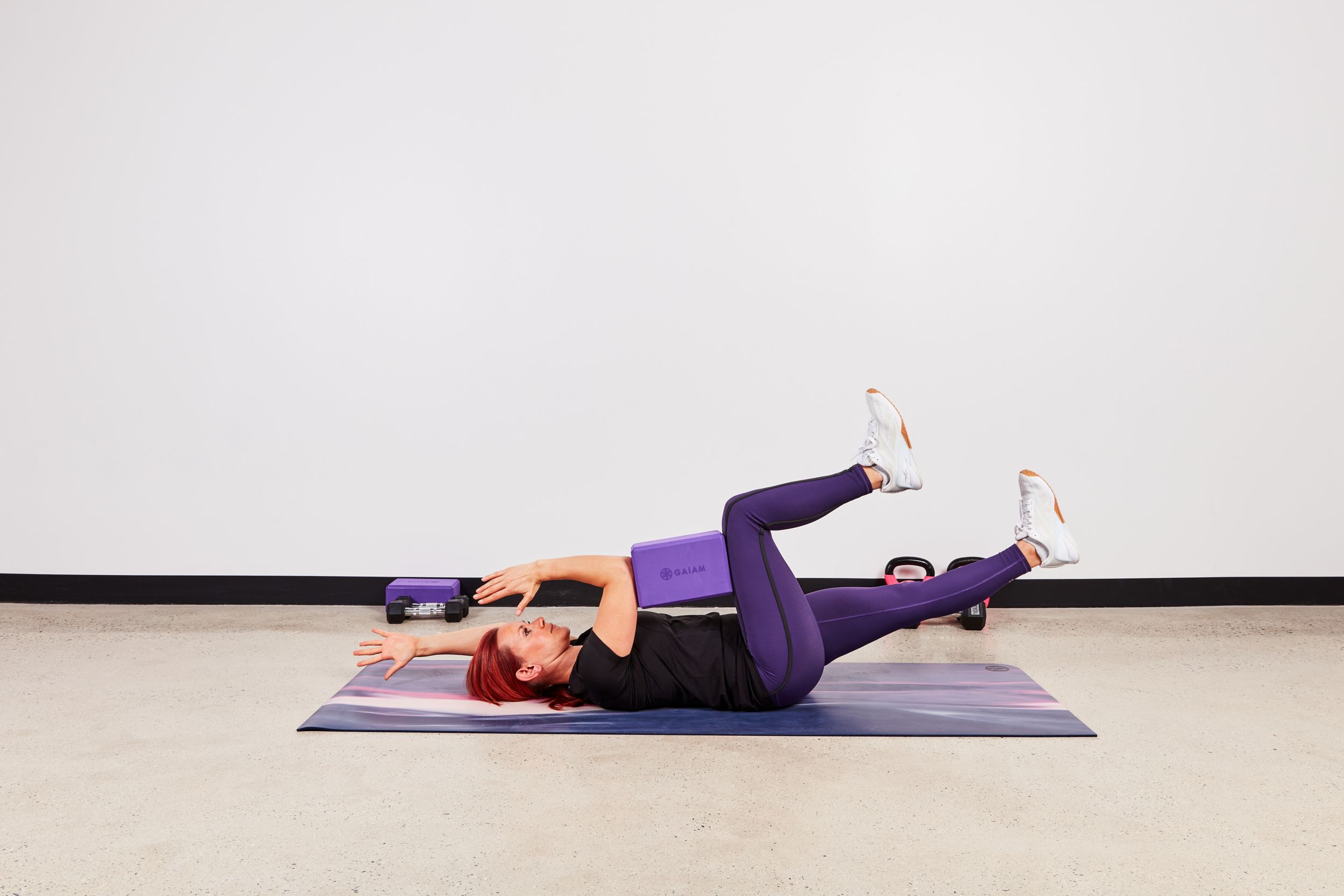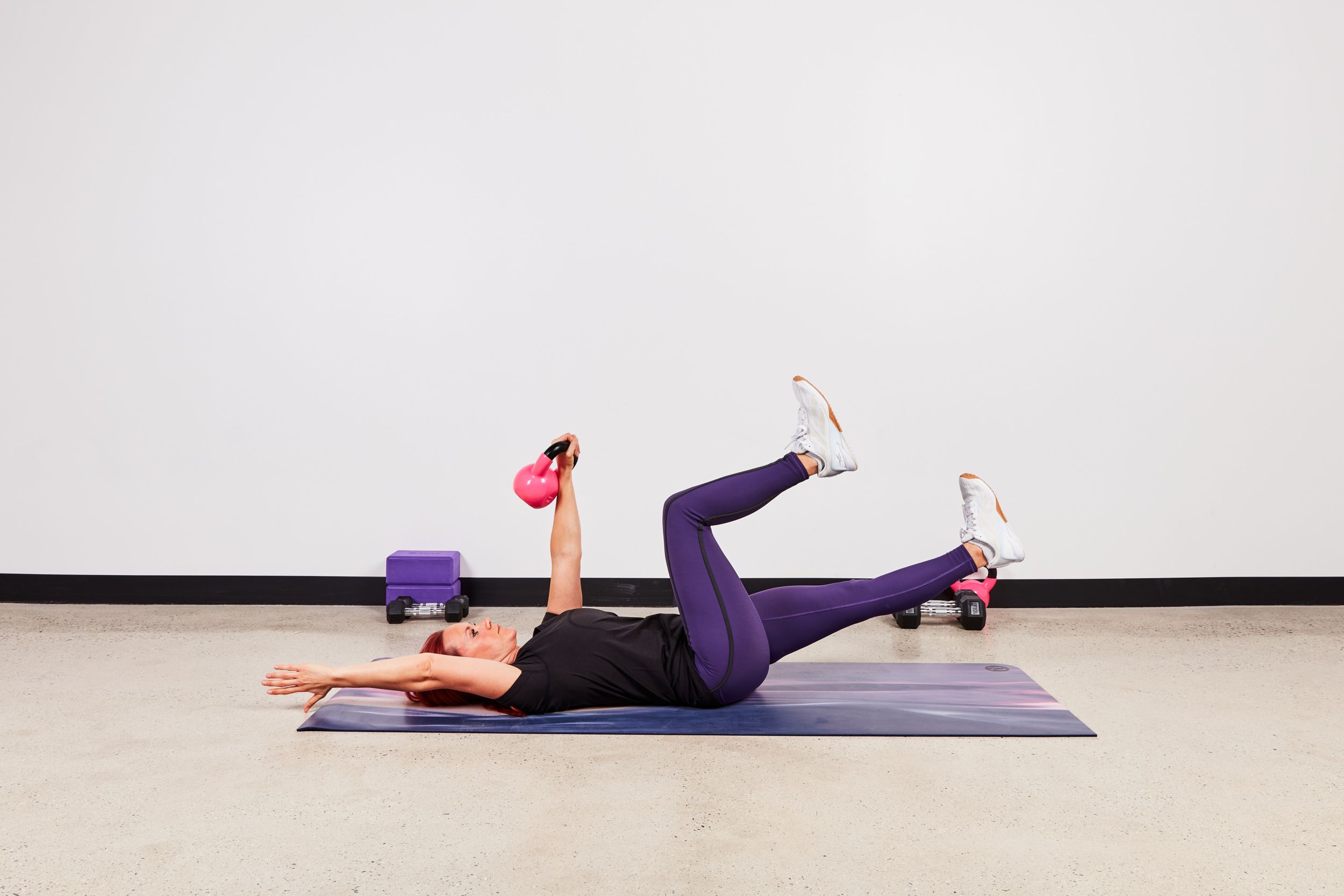The Dead Bug Exercise Is One of the Best Core Moves—Here’s How!
Don't try this around small children or dogs; the dead bug looks hysterical, but will do wonders for your core.
We all know we should be doing core exercises. But we get it: sometimes doing planks and crunches for days just doesn’t seem that appealing. That’s why you need a move that targets your core stability in a super functional way—and for that, you need an exercise called the dead bug. (And yes, it actually does resemble a dying beetle on its back).
To understand how to properly execute this move, and why it benefits cyclists in particular, we chatted with Megan Eyvazzadeh P.T., D.P.T., founder of RunWell, and cofounder of the Restoration Space in Bethlehem, Pennsylvania.
Why should cyclists do the dead bug exercise ?
Eyvazzadeh says the dead bug is a great foundational exercise for athletes, and if done correctly can strengthen the core and enhance a rider’s performance. “Cyclists need to generate a lot of power from their legs and waste the least of their efforts on anything other than the forward motion,” she explains. “If the spine is stable, the power generated by the leg muscles will go into taking the cyclist forward and less energy will be lost in overcoming a wet-noodle of a centre of the body.” Translation: The stronger your midsection, the more efficient your pedalling.
The reason the dead bug exercise stands out from other core moves is because of that functionality it offers. Just think about how you need your trunk to stay steady as you pedal. You’re pretty much practicing that posture as you perform the dead bug.
Research supports the benefits of core stability for cyclists too. One research paper published in Current Sports Medicine Reports suggests cyclists benefit from a strong core, thanks to payoffs like reduced risk of injuries (including low back pain) and more efficiency and power in the saddle.
How do you do the dead bug correctly?
First, get set up properly and learn to hold a stable spine position with this exercise, Eyvazzadeh says.
To do that, lie face up with knees bent and feet flat on the floor. Holding this position, “become aware of the natural curves of your spine,” Eyvazzadeh says. “You want your spine to be in a neutral position, which means just a slight arch in the lower back from the top of the hips to the lowest ribs.”
Next, lift the neck and low back off the ground, while the head, mid back, and butt are in contact with the floor. Then place a folded hand towel (about the thickness of your flat hand) under the lower part of your spine.
Before lifting the legs in the air, notice the amount of pressure on the towel. Then, engage the abs, drawing belly button toward spine, without deforming the towel, Eyvazzadeh says. When you have that abdominal contraction nailed down, it’s time to do the dead bug.
Here’s how to actually perform the dead bug exercise:
- Lie face up and lift both legs, knees bent 90 degrees and placed right over hips. Keep spine in a neutral position. Straighten arms above shoulders and pack shoulders toward the floor. This is your starting position.
- Still maintaining that neutral spine, extend right leg straight out, lowering it toward the floor, as you simultaneously extend left arm overhead, also lowering it toward the floor behind you. Keep left knee right over the hip and right hand right over shoulder.
- Pause, then bring the right leg and left arm back to the starting position.
- Repeat on the opposite side.
- Continue alternating for 30 seconds.
You can practice a combination of flexing your feet and pointing them—changing the foot’s position is helpful as the body needs variety, considering the angles your joints take during cycling, Eyvazzadeh says.
Are there any common mistakes people make when performing the dead bug?
A mistake people make in this move is when they do one of two things: flatten the natural curve of the spine or over-arch their backs, Eyvazzadeh says. She cautions if you flatten your spine to contract your abdominal muscles, or arch to lift or lower the legs, you disadvantage the key muscles needed to run, jump, or swim.
If you do feel your form breaking or the core disengaging, keep your leg and arm higher off the floor. Or start moving just one arm or one leg at a time. This move also takes coordination, so it’s sometimes helpful to start with one limb at a time.
How can I make the dead bug more challenging?
Even if you’re new to core work, the dead bug is a great exercise to kickstart core training. If you’ve already mastered the standard dead bug exercise, you can take it up a notch with these challenging variations from Eyvazzadeh. Just remember: Form is key and maintaining that neutral spine still stands.
Ipsilateral Dead Bug
 Lie face up and lift both legs, knees bent 90 degrees and placed right over hips. Keep spine in a neutral position. Straighten arms above shoulders and pack shoulders toward the floor. Slowly lower right arm and right leg down at the same time (rather than opposite sides). Pause for a moment, without touching the floor. Then return to starting position. Repeat on the other side. Continue alternating for 30 to 60 seconds. Want more from this move? Add a yoga block to the static side (as shown).
Lie face up and lift both legs, knees bent 90 degrees and placed right over hips. Keep spine in a neutral position. Straighten arms above shoulders and pack shoulders toward the floor. Slowly lower right arm and right leg down at the same time (rather than opposite sides). Pause for a moment, without touching the floor. Then return to starting position. Repeat on the other side. Continue alternating for 30 to 60 seconds. Want more from this move? Add a yoga block to the static side (as shown).
Foam Roller Dead Bug
Lie face up on a foam roller placed vertically underneath you, spine neutral, legs lifted with knees bent 90 degrees and placed right over hips. Extend both arms onto floor, palms flat (this offers a little more stability). Slowly lower one leg toward floor. Then return to 90 degrees and repeat on the other side. Continue alternating for 10 reps on each side or for 30 to 60 seconds. If you feel confident, add the arms, just like in the traditional dead bug.
Dead Bug With Weight
 Lie faceup and lift both legs, knees bent 90 degrees and placed right over hips. Keep spine in a neutral position. Grab a dumbbell or kettlebell with right hand and press it over shoulder (as shown). Straighten left arm above shoulder. Pack both shoulders toward the floor. Weight should be directly over right shoulder. Extend left arm and right leg toward the floor. Then slowly return to starting position. Repeat for 10 reps or 30 to 60 seconds. Then switch sides.
Lie faceup and lift both legs, knees bent 90 degrees and placed right over hips. Keep spine in a neutral position. Grab a dumbbell or kettlebell with right hand and press it over shoulder (as shown). Straighten left arm above shoulder. Pack both shoulders toward the floor. Weight should be directly over right shoulder. Extend left arm and right leg toward the floor. Then slowly return to starting position. Repeat for 10 reps or 30 to 60 seconds. Then switch sides.
Dead Bug With a Ball
Lie faceup and lift both legs, knees bent 90 degrees and placed right over hips. Keep spine in a neutral position. Straighten arms above shoulders and pack shoulders toward the floor. Place a soccer ball (or similar sized ball) between thighs, squeezing it. Keeping the knees bent, lower legs a few inches. Keeping core engaged, raise legs back up so knees come right over hips. Arms remain straight over shoulders the entire time. Repeat. Do 10 reps.
How should a cyclist incorporate dead bugs into a workout?
If you’re new to incorporating the dead bug into your routine, you can actually practice it daily. “It takes less than five minutes, and can be done with a variety of leg and arm challenges, (once you’ve mastered the basic form),” Eyvazzadeh says.
But even if you’ve done it before, you can keep it in your workouts at least one time a week or up to three timers per week. Aim to practice your favourite dead bug variation for at least 10 reps.
It’s a great exercise for posture training, Eyvazzadeh adds, making it a great move to practice before you hop on the bike to set your spine and warm up the core. If you’re doing it on non-cycling day, do the dead bug at the start of your next strength or cardio workout to practice getting your core stable before doing more loaded or dynamic movements, Eyvazzadeh says.
In general, she says the more you practice the dead bug exercise, the more you create muscle memory to help you perform it correctly. No matter how often you do it or when, remember to take your time, perfect your form, and control the move before adding any challenging variation.
READ MORE ON: core strength core workouts exercises workouts yoga



